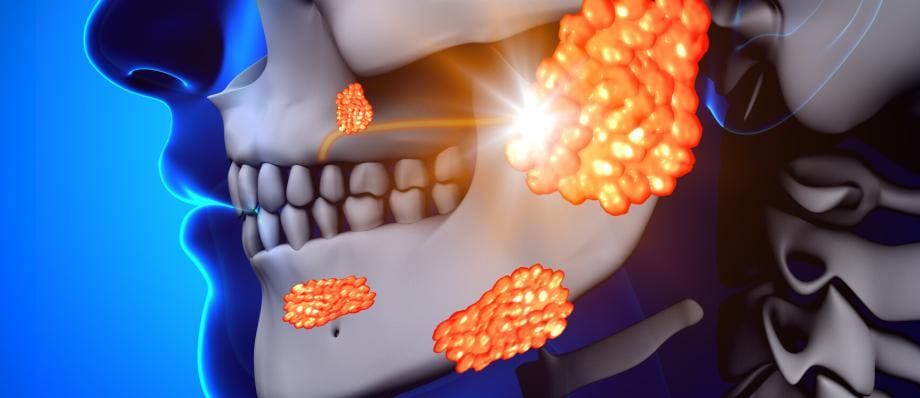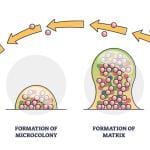Salivary glands are remarkable structures in the human body that often go unnoticed, yet play a crucial role in maintaining oral health and aiding in the digestion process. These glands are responsible for producing and secreting saliva, a fluid with multifaceted functions that extend beyond mere lubrication. In this comprehensive article, we delve into the anatomy, physiology, functions, and disorders of salivary glands, highlighting their significance in overall well-being.
Anatomy of Salivary Glands
Salivary glands are classified into major and minor glands, each with distinct characteristics and locations. Major salivary glands consist of the parotid, submandibular, and sublingual glands, while minor salivary glands are scattered throughout the oral mucosa. These glands are composed of specialized epithelial cells that form clusters called acini. These acini are responsible for producing saliva, which is then transported through a network of ducts to various parts of the oral cavity.
Physiology of Salivary Gland Secretion
Saliva is a complex fluid composed of water, electrolytes, enzymes, mucus, and various proteins. The process of saliva production, or salivation, is regulated by a complex interplay of neural and hormonal mechanisms. The autonomic nervous system, specifically the parasympathetic division, plays a pivotal role in stimulating salivary secretion. Upon sensory input, nerve impulses travel to the salivary glands, triggering the release of saliva.
Functions of Saliva
Saliva is far more than just a lubricant for the oral cavity. It serves a multitude of functions that are vital for overall health:
- Digestion
- Lubrication
- Protection
- Buffering
- Taste and Smell
- Wound Healing
- Speech
Digestion
Saliva contains enzymes like amylase that initiate the breakdown of starches, initiating the digestive process before food even reaches the stomach.
Lubrication
Saliva moistens the mouth, facilitating speech, chewing, and swallowing. It prevents friction and discomfort associated with dry mouth.
Protection
Saliva contains antimicrobial agents and immunoglobulins that help fight bacteria and maintain oral hygiene.
Buffering
Saliva helps maintain the pH balance in the mouth, preventing tooth decay and erosion by neutralizing acids produced by bacteria.
Taste and Smell
Saliva contains proteins that play a role in taste perception, influencing the perception of flavors.
Wound Healing
Growth factors in saliva aid in the repair of oral tissues, contributing to wound healing.
Speech
Adequate saliva is crucial for clear speech and proper enunciation.
Types of Salivary Glands
Salivary glands are classified into two main types based on their size, location, and function: major salivary glands and minor salivary glands.
Major Salivary Glands
Major salivary glands are larger and more prominent, and they produce the majority of the saliva in the oral cavity. There are three pairs of major salivary glands:
- Parotid Glands
- Submandibular Glands
- Sublingual Glands
Parotid Glands
These are the largest of the major salivary glands and are located in front of and below the ears, between the skin and the muscles of the jaw. Parotid glands produce a watery saliva that contains amylase, an enzyme that aids in the digestion of starches.
Submandibular Glands
These glands are situated beneath the lower jawbone, near the angle of the mandible. They produce a mixture of serous (watery) and mucous (thick and viscous) saliva, which helps lubricate the oral cavity and initiate the digestion process.
Sublingual Glands
The sublingual glands are located beneath the tongue, in the floor of the mouth. They secrete primarily mucous saliva, which assists in moistening and lubricating the oral mucosa.
Minor Salivary Glands
Minor salivary glands are smaller and more numerous than major glands, and they are distributed throughout the oral cavity. They secrete saliva directly into the oral cavity rather than through large ducts. Minor salivary glands play a significant role in maintaining oral health and lubrication. These glands are further categorized into different types based on their location:
- Labial Glands: Found in the lips.
- Buccal Glands: Located in the cheeks.
- Palatal Glands: Situated in the roof of the mouth (palate).
- Lingual Glands: Found on the underside of the tongue.
- Molar Glands: Located near the back molars.
- Glossopalatine Glands: Situated at the back of the mouth, near the junction of the hard and soft palates.
Salivary Gland Disorders
Disruptions in the function of salivary glands can lead to various health issues. Some common disorders include:
- Xerostomia (Dry Mouth)
- Sialadenitis
- Sialolithiasis
- Salivary Gland Tumors
- Sjögren’s Syndrome
Xerostomia (Dry Mouth)
This condition arises when there is a decreased production of saliva, leading to discomfort, difficulty in swallowing, and an increased risk of dental decay.
Sialadenitis
Inflammation of salivary glands, often caused by bacterial infections or obstructions within the ducts.
Sialolithiasis
The formation of salivary stones or calculi within the ducts, causing pain and swelling.
Salivary Gland Tumors
These can be benign or malignant and may require surgical intervention.
Sjögren’s Syndrome
An autoimmune disorder that affects salivary glands, leading to dry mouth and dry eyes.
Treatment of Salivary Gland Disorders
The treatment of salivary gland disorders depends on the specific disorder, its underlying cause, and the severity of symptoms. Here, we’ll discuss some common treatments for various salivary gland disorders:
Xerostomia (Dry Mouth)
Xerostomia can result from various causes, including medications, medical conditions, radiation therapy, and autoimmune disorders. Treatment options include:
- Lifestyle Modifications
- Saliva Substitutes
- Medications
Lifestyle Modifications
Encouraging adequate fluid intake, avoiding alcohol and caffeine, and using humidifiers can help alleviate dry mouth symptoms.
Saliva Substitutes
Artificial saliva products can provide temporary relief by mimicking natural saliva.
Medications
Prescription medications such as pilocarpine and cevimeline can stimulate salivary flow.
Sialadenitis (Salivary Gland Inflammation)
Sialadenitis often results from bacterial infections. Treatment approaches include:
- Antibiotics
- Warm Compresses
Antibiotics
In cases of bacterial infection, antibiotics are prescribed to target and eliminate the infectious agents.
Warm Compresses
Applying warm compresses to the affected area can help reduce pain and inflammation.
Sialolithiasis (Salivary Gland Stones)
Sialolithiasis involves the formation of stones within the salivary gland ducts. Treatment options include:
- Manual Removal
- Sialogogues
- Surgery
Manual Removal
For small stones near the duct opening, a healthcare professional may be able to manually remove the stone.
Sialogogues
These are substances that promote salivary flow and can help dislodge smaller stones.
Surgery
Larger stones or those causing significant blockage may require surgical removal.
Salivary Gland Tumors
The treatment of salivary gland tumors depends on their type (benign or malignant) and location. Treatment options include:
- Surgery
- Radiation Therapy
- Chemotherapy
Surgery
Surgical removal is often the primary treatment for both benign and malignant tumors. In some cases, this may involve removing a portion of the salivary gland (partial parotidectomy, submandibular gland excision) or the entire gland (total parotidectomy).
Radiation Therapy
Radiation may be used to treat malignant tumors, especially when surgery is not feasible or to target any remaining cancer cells.
Chemotherapy
In cases of malignant tumors that are aggressive or have spread, chemotherapy may be recommended.
Sjögren’s Syndrome
Sjögren’s Syndrome is an autoimmune disorder that affects the salivary glands. Treatment aims to manage symptoms and reduce inflammation:
- Artificial Tears and Lubricants
- Medications
- Saliva Substitutes
- Moisturizing Mouth Sprays and Gels
Artificial Tears and Lubricants
These help manage dry eyes and dry mouth associated with the syndrome.
Medications
Immunosuppressive drugs may be prescribed to suppress the autoimmune response and reduce inflammation.
Saliva Substitutes
Artificial saliva can help alleviate dry mouth symptoms.
Moisturizing Mouth Sprays and Gels
These products can provide relief for dry mouth.
It’s important to note that treatment plans are individualized based on the patient’s condition, overall health, and specific symptoms. A healthcare professional, often a dentist, oral surgeon, or otolaryngologist (ear, nose, and throat specialist), will evaluate the patient and recommend the most appropriate treatment approach. Early diagnosis and intervention are key to effectively managing salivary gland disorders and preventing complications.
Conclusion
Salivary glands, often underappreciated, are integral components of human anatomy with far-reaching functions that extend beyond oral health. From digestion and protection to speech and taste perception, their contributions are truly remarkable. A deeper understanding of the anatomy, physiology, functions, and disorders of salivary glands underscores their significance in maintaining overall well-being. Further research in this field may lead to innovative treatments for salivary gland disorders, ultimately enhancing the quality of life for countless individuals.





